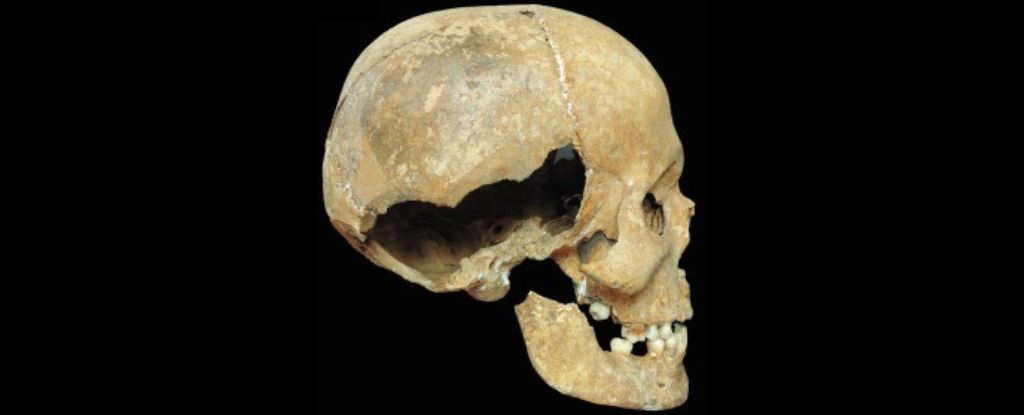Archaeologists used a battered skull found in the crypt of a medieval Italian church to reconstruct a brutal scene that unfolded more than 800 years ago.
The skull belongs to a young man and since it was buried in the main atrium of San Biagio it is believed to be a member of the wealthy De Cittiglio family who owned the land The church was built.
A life of privilege apparently wasn’t enough to save him from a murder he might never have seen coming.
Researchers from the University of Siena and the University of Insubria in Italy used four major lesions in the man’s skull to determine an attack sequence.
Physical exams, three-dimensional digital microscopy, and CT scans of the bone can tell researchers the type of injury, the direction of an attack, and even the type of weapon that might have been used. In this case, analysis suggests that the initial attack came from behind, causing only a superficial cut in the bone at the back of the skull.
Perhaps the young man had been attacked by surprise and only narrowly managed to parry or dodge a potentially fatal blow before attempting to flee.
The nature of the shattered bone suggests that a lone attacker wielding a sharp metal blade, most likely a long sword, approached the victim from behind.
“The victim, who was aware of the attack at the time and may not have been prepared for combat, must have attempted an escape while being hit from behind in the head, resulting in lesion C, which immediately disables flight, likely interrupted or at least slowed down ,” the authors continue.
Lesion C, the team concludes, would almost certainly have removed the man’s right ear and caused minor bleeding. But it probably wasn’t fatal either.
Yet with two bone-crushing blows to the skull, there was little chance of putting on a good fight. The third blow appears to have come immediately after, causing an even more severe fracture to the lower back of the skull. Forced forward to the ground, he might have been lucky enough to lose consciousness At this point.
The last and strongest blow, Lesion A, would have finished him off. It burrowed a few inches into the skull and undoubtedly caused brain damage and profuse bleeding. Death would have come in moments.
“The number and location of the perimortem injuries and the damaging power of the blows indicated the intent of the attacker and perhaps some exaggeration towards the victim.” write the authors.
The hapless man’s skull was unearthed in 2006, but this study is the first to use modern techniques to uncover the man’s end in his bones.
The finds illustrate what life might have been like in medieval Italy between 900 and 1170 AD. It also demonstrates the plausibility of using skull injuries to reconstruct modern human deaths in the field of forensics.
The man found in San Biagio certainly doesn’t appear to have been looking for trouble, but he was clearly experienced in warfare in general. The authors say that his right shoulder showed signs of habitual archery from an early age. Other parts of his skull also show signs of scarring.
Archaeologists may now have a better idea of how this man died, but without a historical record of him, the reason will remain a mystery.
The study was published in Journal of Archaeological Science: Reports.





